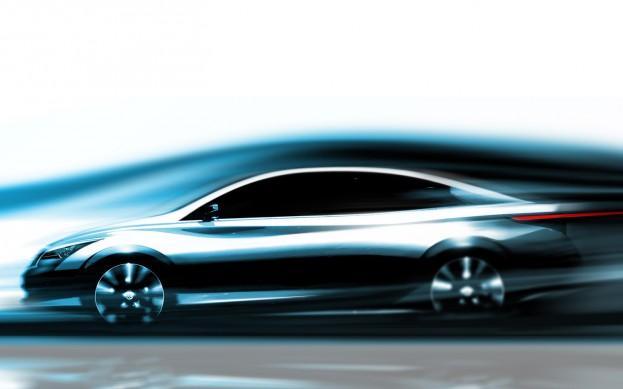 Nissan is taking the Leaf upscale. The Japanese carmaker’s luxury brand, Infiniti, will unveil a battery-electric concept car at April’s New York Auto Show. This car will have a lot in common with the Leaf. A production version will eventually make its way to Infiniti showrooms.
Nissan is taking the Leaf upscale. The Japanese carmaker’s luxury brand, Infiniti, will unveil a battery-electric concept car at April’s New York Auto Show. This car will have a lot in common with the Leaf. A production version will eventually make its way to Infiniti showrooms.
Unlike the Leaf, the Infiniti electric car will sacrifice some efficiency for style and performance. “It was designed to be a luxury vehicle first and an electric vehicle second,” said Infiniti marketing manager Sam Chung told the Detroit Bureau. The car’s name is currently unknown, although it might be called LE.
What is known is that the Infiniti will take styling cues from the G-Series sedan and coupe, and the JX crossover, not a bad place to start. Infiniti showed a plug-in hybrid concept, the Emerg-E, at the Geneva Motor Show; some of the styling from that car may carry over to the LE. Infiniti released a sketch of a battery-electric production model last September (above), almost certainly the same model the New York concept will preview, but some details of the styling may have changed.
Underneath the new styling will be the Leaf’s electric motor and batteries. To improve the Infiniti’s performance, the lithium-ion battery pack will be larger than the Leaf’s 24-kWh. A Leaf does 0-60 mph in 11 seconds, not exactly a blistering pace, but Infiniti indicated that the LE will shave a few seconds off that time. No word on whether the Infiniti will match the Nissan’s EPA Combined Cycle range of 73 miles per charge.
The LE is part of Nissan’s overall strategy to increase electric car production. Along with corporate sibling Renault, Nissan wants to be able to produce 400,000 electric vehicles annually by 2015. Despite a slow sales year for the Leaf in 2011, Nissan expects to sell 20,000 this year, and the company wants the LE to sell in similar numbers. “We’re planning for volume,” rather than just looking to create a halo car, said Chung. “Otherwise we wouldn’t do it.”
More details will come after the Infiniti’s New York debut, but it will probably command a significant price premium over the Leaf. Per Nissan’s dual-brand strategy, other Infinitis cost more than comparable Nissans, since they offer more amenities. The electric Infinity will be a rarity in an already small market segment. Nissan only sold 478 Leafs in February and 676 in January. A more expensive car would probably return even smaller numbers.
Nonetheless, Fisker and Tesla are also betting that luxury sedan buyers want battery power, so it should be interesting to see what happens when the LE, Fisker Nina, and Tesla Model S hit showrooms. Details on the Nina are still sketchy, but Tesla claims a top-spec Model S will have a 300-mile range and will do 0-60 mph in 4.5 seconds (with an optional performance package). To be competitive, Infiniti will need to extract more power from the Leaf’s guts, or undercut the Tesla’s $57,400-$77,400 MSRP.
Editors' Recommendations
- Tesla’s new million-mile battery could finally make electric cars affordable
- Tesla delivered more electric cars in 2019 than in any previous year
- Lexus plugs in its electric car offensive with an innovative concept
- Nissan and EVgo adding another 200 fast-charging stations for electric cars
- Tesla Model 3 is the world’s most-searched-for electric car, survey says


